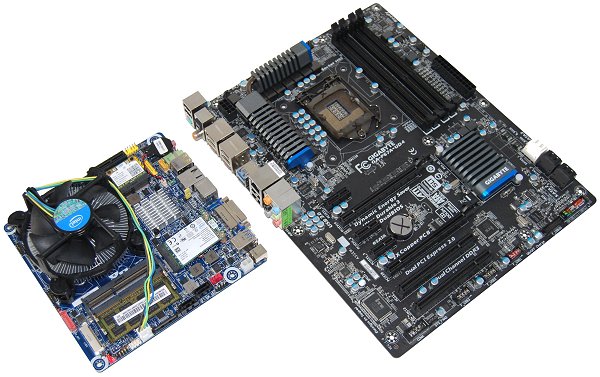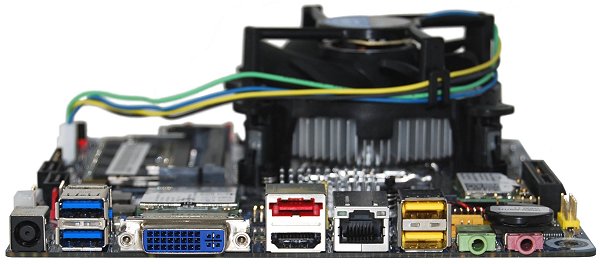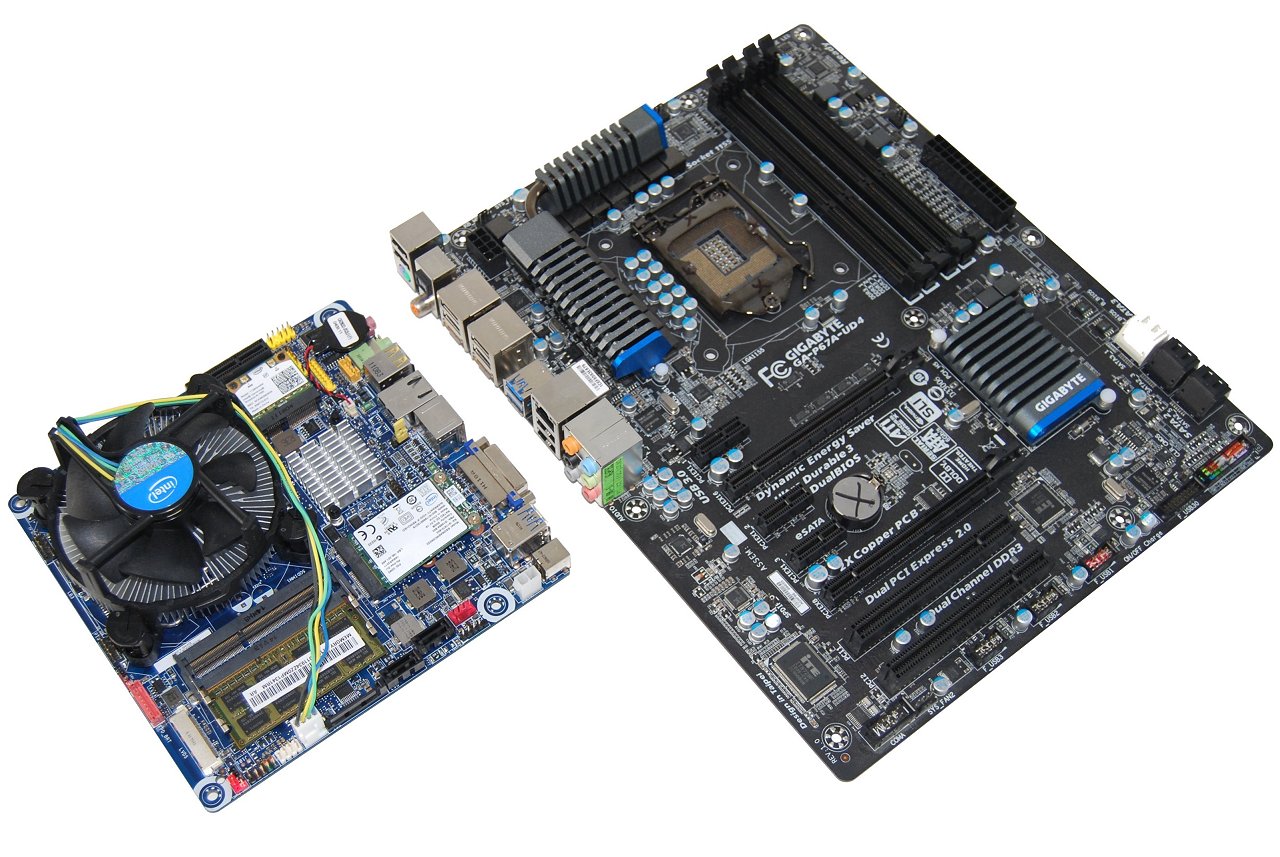Features & Specifications
Living up to the name of its form factor, the board measures an extremely compact 6.7 x 6.7 inches (17 x 17cm). Naturally, the primary focus here is size and everything about the DH61AG is designed to make it as small as possible. As such, it drops many of the features found on other LGA1155 motherboards, making the Z68 or even the H67 chipsets somewhat overkill. Therefore, Intel has used its most basic Cougar Point chipset: the H61.


Compared to the H67, there are quite a few features missing – some more important than others. For example, the H61 chipset only supports two DIMM slots, 10 USB 2.0 ports, six PCI Express 2.0 lanes (2.5GT/s) and four SATA 3Gb/s ports. The H67 can handle four DIMM slots, 14 USB 2.0 ports, eight PCI Express 2.0 lanes (2.5GT/s), two SATA 6Gb/s ports and four SATA 3Gb/s ports. SATA 6Gb/s support is likely the most significant feature missing, and we should note that the H61 doesn't have any CPU or GPU performance tuning options.


The Intel DH61AG motherboard carries two SO-DIMM slots (support for up to 16GB dual-channel memory at 1066/1333MHz), two PCIe mini-card connectors (one half-length, one full-/half-length), a single PCIe x4 slot, two SATA ports, eSATA and USB 3.0 ports, two USB 2.0 ports with high-current support, 10-channel audio, and Gigabit LAN. The board is hardly short on features and functionality considering its paltry footprint.

The SATA 3Gb/s ports are connected to the H61 chipset and the board features a SATA power connector onboard. When using the supplied power cable, the DH61AG can power two 3.5" or 2.5" devices. Additionally, the full size Mini-PCIe slot also supports mSATA SSDs such as the Intel 310 Series, 311 Series, Kingston SSDNow SMS100S2 and OCZ Nocti Series. The 3Gb/s eSATA connector on the I/O panel is also connected to the H61.

The 10-channel audio is delivered by a rather traditional choice in the Realtek ALC892 codec. This 8 + 2 analog audio codec is often found on high-end motherboards. However, Intel has only implemented analog/digital line-out and analog line-in on the back panel. The 8-channel (7.1) Intel HD Audio is supported when using HDMI. The board can also handle in-chassis stereo speakers, S/PDIF digital audio output, DMIC digital microphone input as well as front panel HD Audio/AC'97 headphones/mic support via onboard headers.

USB 3.0 connectivity is tackled by the NEC PD720200, which provides two ports on the board's I/O panel. You'll also see two hi-current USB 2.0 ports, which essentially means they're quicker at charging mobile devices such as smartphones. Network support is provided by an Intel Pro 10/100/1000 integrated NIC (model number 82579V, to be specific) and it has a Thermal Design Power of just 0.66w using the 90nm design process.
